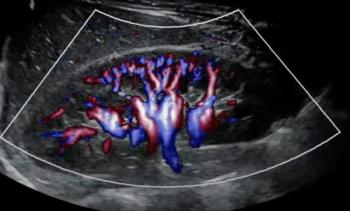
GE updates Signa platform
The latest evolution of GE Healthcare's Signa HD x (high definition x) platform offers MR pulse sequences that overcome barriers to diagnostic scans in some difficult-to-image patients. The xt version, shown at the RSNA meeting, features two major innovations: 3D Cube and Ideal.
The latest evolution of GE Healthcare's Signa HD x (high definition x) platform offers MR pulse sequences that overcome barriers to diagnostic scans in some difficult-to-image patients. The xt version, shown at the RSNA meeting, features two major innovations: 3D Cube and Ideal. 3D Cube's capture of submillimeter isotropic voxels allows the viewing of a volumetric data set in any plane and the visualization of lesions as small as 2 mm. Ideal improves image clarity through uniform fat suppression and handling multiple contrasts from fat, water, and the two combined, both in-phase and out-of-phase. It also reduces or eliminates artifacts due to chemical shift of metal implants, such as orthopedic screws or dental work, and eliminates misregistration between fat and water.
Newsletter
Stay at the forefront of radiology with the Diagnostic Imaging newsletter, delivering the latest news, clinical insights, and imaging advancements for today’s radiologists.




























